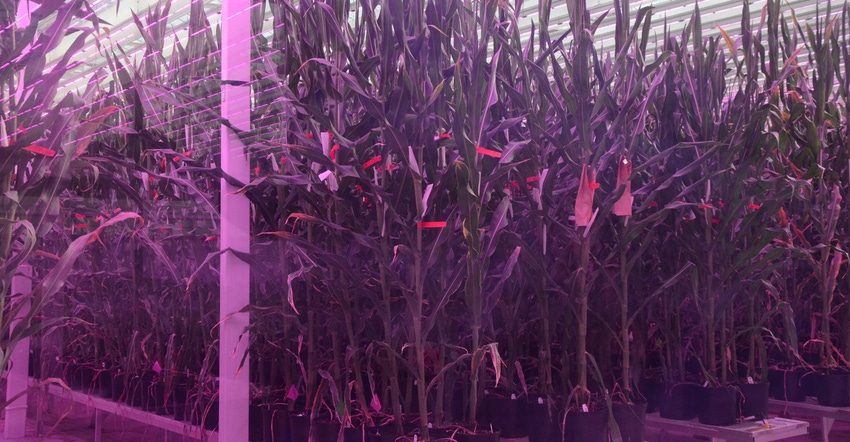March 9, 2021

Drew Showalter is asked some interesting questions in his role as strategic marketing manager for corn at Syngenta Seeds. One set of questions that seems to keep coming up is, why did Syngenta build a corn breeding facility in Idaho?
“There are a myriad of reasons why we did,” he says. “One, we already had a facility there. Two, plenty of sunshine and lack of hailstorms."
He notes that sunshine is great for greenhouses, but hail isn't. And the facility is starting to pay off.
The $30 million Trait Conversion Accelerator was a big statement for Syngenta Seeds, and as Showalter explains, it was part of the $400 million seed technology investment the company committed to for North America in 2017. He explains that beyond the facility, that investment went into scientists and plant breeders for the research and development organization. And as the Nampa facility ramped up new hybrids, the next step was to enhance testing, which increased 30%.
“That 30% more testing means more locations, more trials within locations,” he says, “whether that’s our late-stage or one-year precommercial trials.”
Showalter explains that that late-stage testing, and testing hybrids for two years in the trait package farmers will plant, is important to determining how a hybrid performs before it goes to the farmer. “The 30% more incremental testing gives us a larger footprint of locations; it’s more plots and more trials within the individual locations, so that we have a better understanding of how our research and development pipeline is performing in all geographies and environments,” he says.
Going beyond the greenhouse
The Idaho location is where those hybrids get their start. The perfect growing conditions allow breeders to work the crosses and bring new traits to farmers. The added horsepower of the greenhouse means more targeted hybrids to test, and it helps boost the selection of hybrids in the field.
“The Nampa facility is enabling more products into those additional trials and locations,” Showalter says. “We’re filling those trials with more hybrids that have traits our farmers want, like Agrisure Viptera and Agrisure Duracade.”
And the work is expanding. He notes that Enogen hybrids which have traits that not only boost ethanol production efficiency but also show value in beef and dairy rations, will be part of the trait development, too. “Nampa is the flywheel, so to speak, that kicks out more products that is filling up that incremental testing that we’ve brought to the market,” he says.
As for Enogen expansion, Showalter notes the product still has a role in ethanol production, but the unique corn enzyme technology boosts the efficiency of both beef and dairy rations. “That has opened up a lot of doors with channel partners, as well as farmers,” he says. “A customer might have had a unique technology on their farm they were feeding and were happy with a current supplier. Now we can have a different discussion with those growers, which is about feed efficiency.”
Expanding opportunities
The challenge, or opportunity, for farmers and Syngenta Seeds is at buying time, given the expanding choices that are more geographically targeted. The company markets seed at retail under the NK Seeds brand, and through independent seed advisers at Golden Harvest. “It’s going to be up to our channel partners and seed advisers to position those products right,” Showalter says.
Another feature of the Nampa facility is the ability to expand breeding focus to different regions of the country. For example, opening locations where more farmers can plant Enogen seeds may have value for beef and dairy producers in regions outside current geography.
“That's exactly what Nampa can enable,” he says. “We’ve got a breeding program focused on the West, one that's focused on the East, and are bringing a breeding program that’s focused on the North. And we’ve got Enogen in each of those plans.”
You can learn more about the seed investment and how it's impacting future products at Syngenta-US.com.
About the Author(s)
You May Also Like






